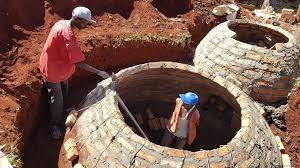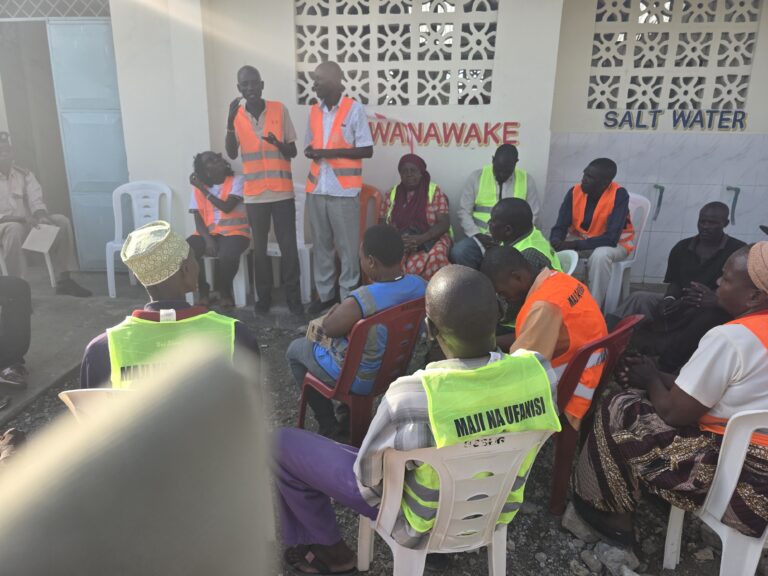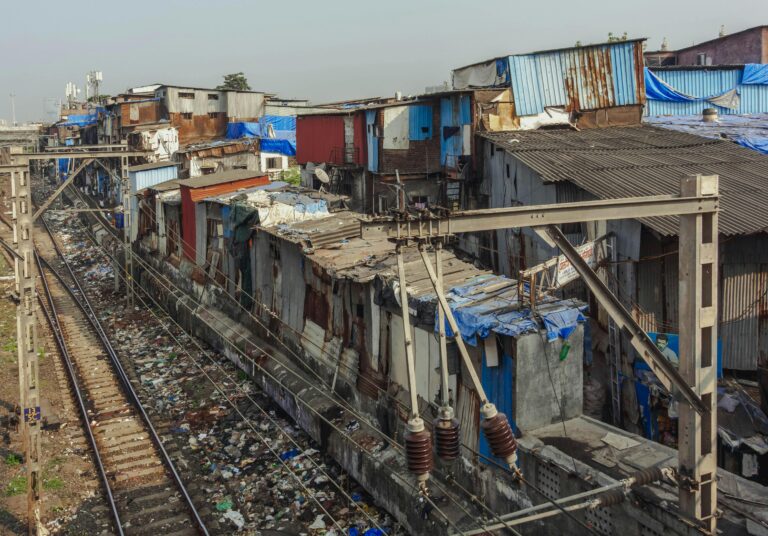In ASAL regions, the harsh environmental conditions make it difficult for communities to access clean water and maintain sanitation standards. The growing impact of climate change has exacerbated these challenges, leading to widespread water scarcity and sanitation-related health issues. You might wonder, how can sustainable sanitation be achieved in such tough environments?
In this article, we’ll delve into the importance of building sustainable sanitation solutions in ASAL regions and explore the challenges and innovative approaches that can lead to resilient and healthier communities.
A Detailed Explanation of Sustainable Sanitation in ASAL Regions
The Importance of Sanitation in ASAL Regions
Sanitation refers to the safe management of human waste, including toilets and facilities for washing hands and safely disposing of waste products. In ASAL regions, where water is scarce, and infrastructure is limited, poor sanitation often leads to the spread of diseases such as cholera, diarrhea, and dysentery, which have devastating effects on already vulnerable populations.
Proper sanitation is more than just about health. It also touches on dignity and safety, particularly for women and children. Communities with poor sanitation practices suffer from low productivity, as preventable diseases diminish labor capacity and disrupt education.

The Sanitation Challenges in ASAL Areas
- Water Scarcity:
Water is critical for maintaining sanitation, but in ASAL regions, it is often scarce due to prolonged droughts. Many communities have to prioritize drinking water over sanitation, which leads to poor hygiene and sanitation practices. - Poor Infrastructure:
ASAL regions often lack the necessary infrastructure to manage sanitation systems effectively. This includes inadequate latrines, open defecation practices, and lack of sewage systems. - High Poverty Levels:
Most ASAL communities face extreme poverty, which limits their ability to invest in sanitation facilities. With limited financial resources, households struggle to afford even basic sanitation services. - Cultural Practices:
In some ASAL areas, cultural beliefs and practices also present challenges to the adoption of modern sanitation facilities. Open defecation and communal latrines may be culturally accepted, making it difficult to introduce new sanitation systems without significant community engagement and education.
Solutions for Sustainable Sanitation in ASAL Regions
1. Water-Saving Sanitation Technologies
In regions where water is scarce, innovative water-saving technologies are crucial. Dry toilets, such as composting toilets and ventilated improved pit (VIP) latrines, require little or no water. These systems convert human waste into compost, which can be used as fertilizer, promoting a circular economy while reducing water usage.
2. Community-Led Total Sanitation (CLTS)
CLTS focuses on mobilizing communities to eliminate open defecation and adopt improved sanitation practices. It involves local leaders and community members in planning and implementing sanitation systems that are appropriate for their environment. This approach is effective because it promotes behavior change, which is critical for sustaining long-term sanitation improvements.
3. Integration of WASH Programs with Livelihood Support
Combining Water, Sanitation, and Hygiene (WASH) programs with livelihood support initiatives can significantly improve community resilience. For instance, training local entrepreneurs to maintain and repair sanitation systems creates jobs and ensures that facilities are well-maintained. This approach empowers communities to manage their sanitation solutions, fostering sustainability.
4. Building Climate-Resilient Infrastructure

Climate change exacerbates the challenges in ASAL regions, making it necessary to develop climate-resilient sanitation systems. This could include the construction of flood-resistant latrines, boreholes, and water collection systems that withstand extreme weather conditions like droughts and floods. These systems not only address current needs but are adaptable to future climate scenarios.
5. Policy Advocacy and Community Involvement
To build sustainable sanitation solutions, there must be an integration of local governance, community participation, and policy advocacy. Organizations like Maji Na Ufanisi engage in evidence-based policy advocacy to push for government support for sanitation infrastructure in ASAL areas. Community involvement ensures that solutions are culturally appropriate and have long-term support from local residents.
How Maji Na Ufanisi (MNU) is Leading Sanitation Solutions in ASAL Regions
Maji Na Ufanisi has been at the forefront of improving sanitation in ASAL regions in Kenya. Their projects focus on empowering marginalized communities by providing access to safe and clean water, sanitation, and hygiene (WASH) facilities while integrating climate change adaptation strategies.
Key Achievements by MNU:
- Capacity Building in Community-Based Organizations (CBOs):
MNU has strengthened the capacity of local CBOs to manage and sustain WASH initiatives, ensuring that communities have the skills and resources necessary to maintain sanitation systems over the long term. - Construction of Climate-Resilient Sanitation Facilities:
In response to the increasing impacts of climate change, MNU has built flood-resistant latrines and sanitation systems that ensure functionality during droughts and heavy rains. - Educational Programs:
MNU has implemented hygiene education programs in schools, equipping students with the knowledge they need to maintain proper hygiene practices. These students act as ambassadors for hygiene and sanitation in their communities. - Promoting Gender-Inclusive Solutions:
Recognizing the critical role that women and girls play in water and sanitation, MNU has developed gender-sensitive WASH programs that provide safe spaces for women to access sanitation services, reducing the risk of gender-based violence.
Everything Else You Need to Know About Sustainable Sanitation in ASAL Regions
What Role Does the Government Play in ASAL Sanitation?
Government involvement is crucial for ensuring long-term sustainability of sanitation solutions. Policymakers need to implement supportive policies, invest in infrastructure, and create an enabling environment for NGOs like Maji Na Ufanisi to operate efficiently.
The Future of Sanitation in ASAL Regions
With continued efforts from organizations like Maji Na Ufanisi, the future of sanitation in ASAL regions looks promising. By promoting community-led approaches and integrating climate resilience into WASH programs, it is possible to build sustainable sanitation solutions that improve health outcomes and enhance the quality of life in ASAL regions.
Conclusion
Building sustainable sanitation solutions in ASAL regions is crucial for improving health, dignity, and resilience in some of the world’s most vulnerable communities. Organizations like Maji Na Ufanisi play an instrumental role in making these solutions a reality, one community at a time.
FAQs about Sustainable Sanitation in ASAL Regions
1. What is sustainable sanitation?
Sustainable sanitation refers to systems that are economically viable, environmentally sound, and socially acceptable. They promote long-term sanitation solutions without depleting natural resources or harming the environment.
2. Why is sanitation important in ASAL regions?
Sanitation is essential in ASAL regions to prevent the spread of diseases, protect water sources, and improve overall community health, especially in areas with limited water access.
3. What are dry sanitation systems?
Dry sanitation systems are toilets that don’t require water for waste disposal. Examples include composting toilets and ventilated improved pit (VIP) latrines.
4. How does climate change affect sanitation in ASAL areas?
Climate change leads to more frequent droughts and floods, which can damage sanitation infrastructure and worsen water scarcity, making it harder to maintain proper sanitation.
5. What is the role of community-led sanitation programs?
Community-led programs engage locals in managing sanitation solutions, fostering ownership and long-term sustainability.
6. What are the challenges to improving sanitation in ASAL regions?
Challenges include water scarcity, poor infrastructure, financial constraints, and cultural practices that hinder the adoption of modern sanitation solutions.
7. How can WASH programs improve livelihoods?
WASH programs can improve livelihoods by creating jobs in the maintenance and repair of sanitation systems, as well as by preventing waterborne diseases, which allows community members to remain healthy and productive.
8. Why is gender inclusion important in sanitation projects?
Gender-inclusive sanitation projects ensure that women and girls have safe access to facilities, which reduces health risks and the likelihood of gender-based violence.
9. What are flood-resistant sanitation systems?
Flood-resistant systems are built to withstand extreme weather conditions, preventing contamination and ensuring functionality during floods.
10. How is Maji Na Ufanisi addressing sanitation challenges in ASAL areas?
Maji Na Ufanisi is addressing these challenges through capacity building, constructing climate-resilient sanitation facilities, promoting hygiene education, and advocating for supportive policies.



